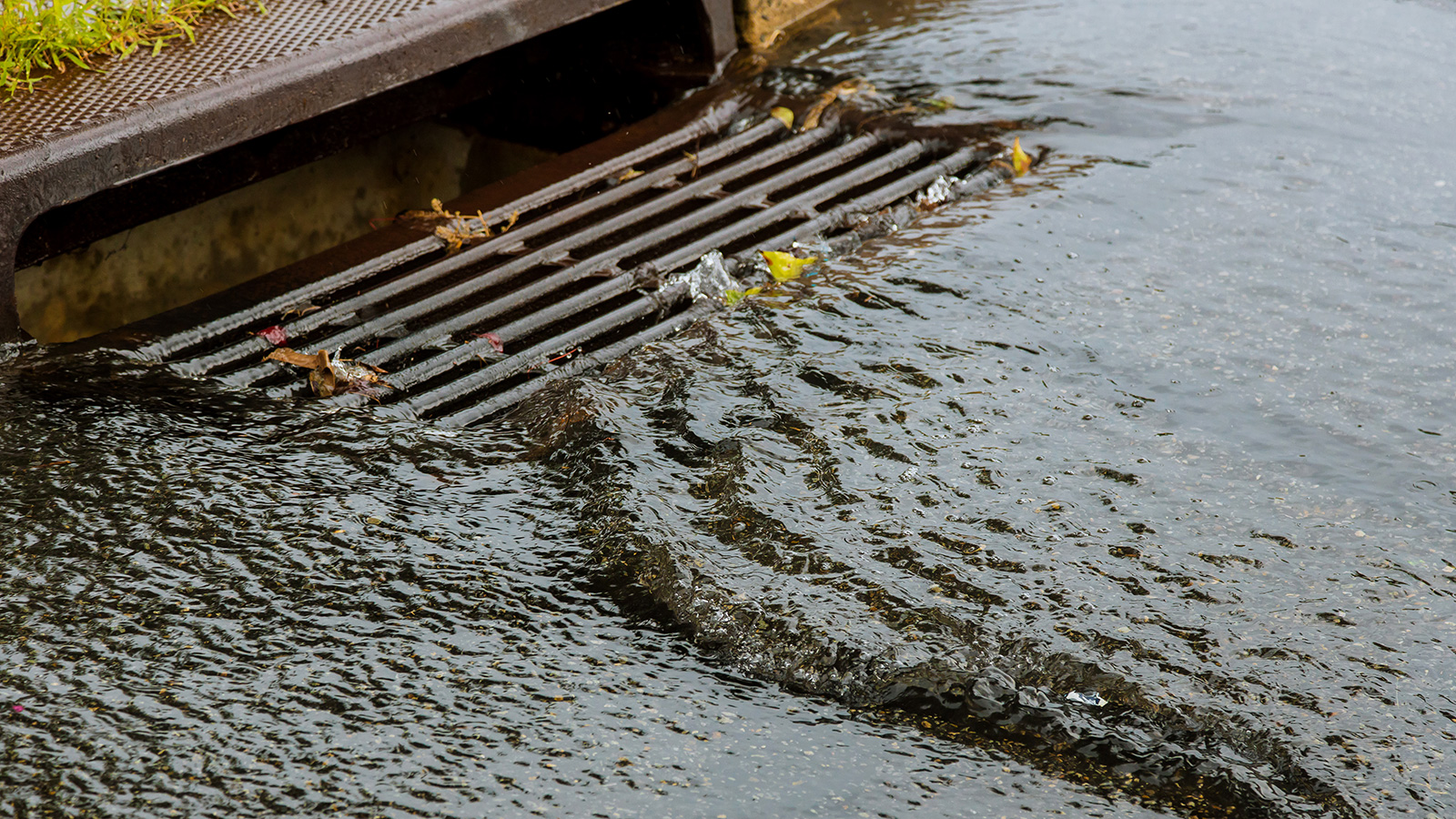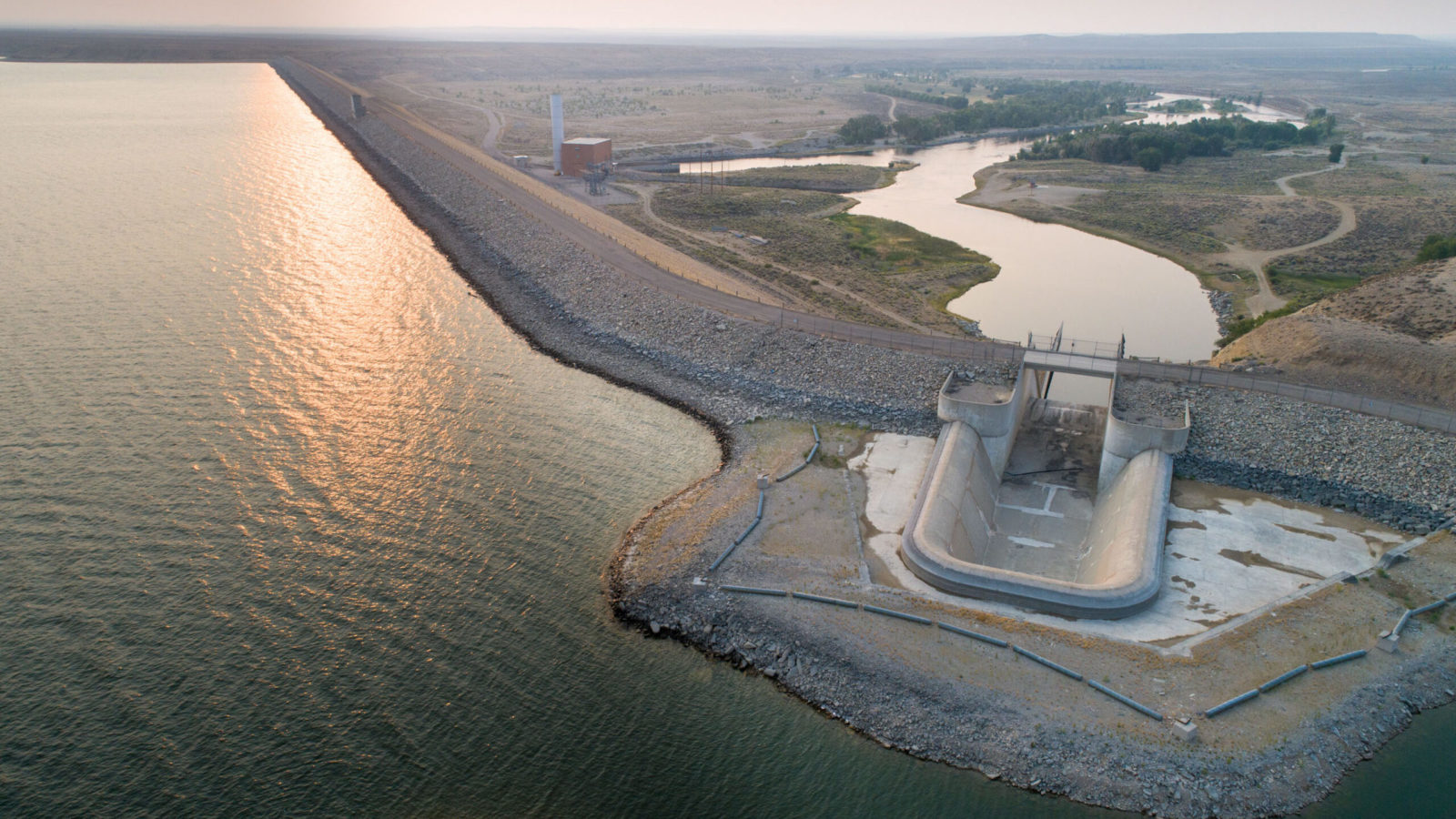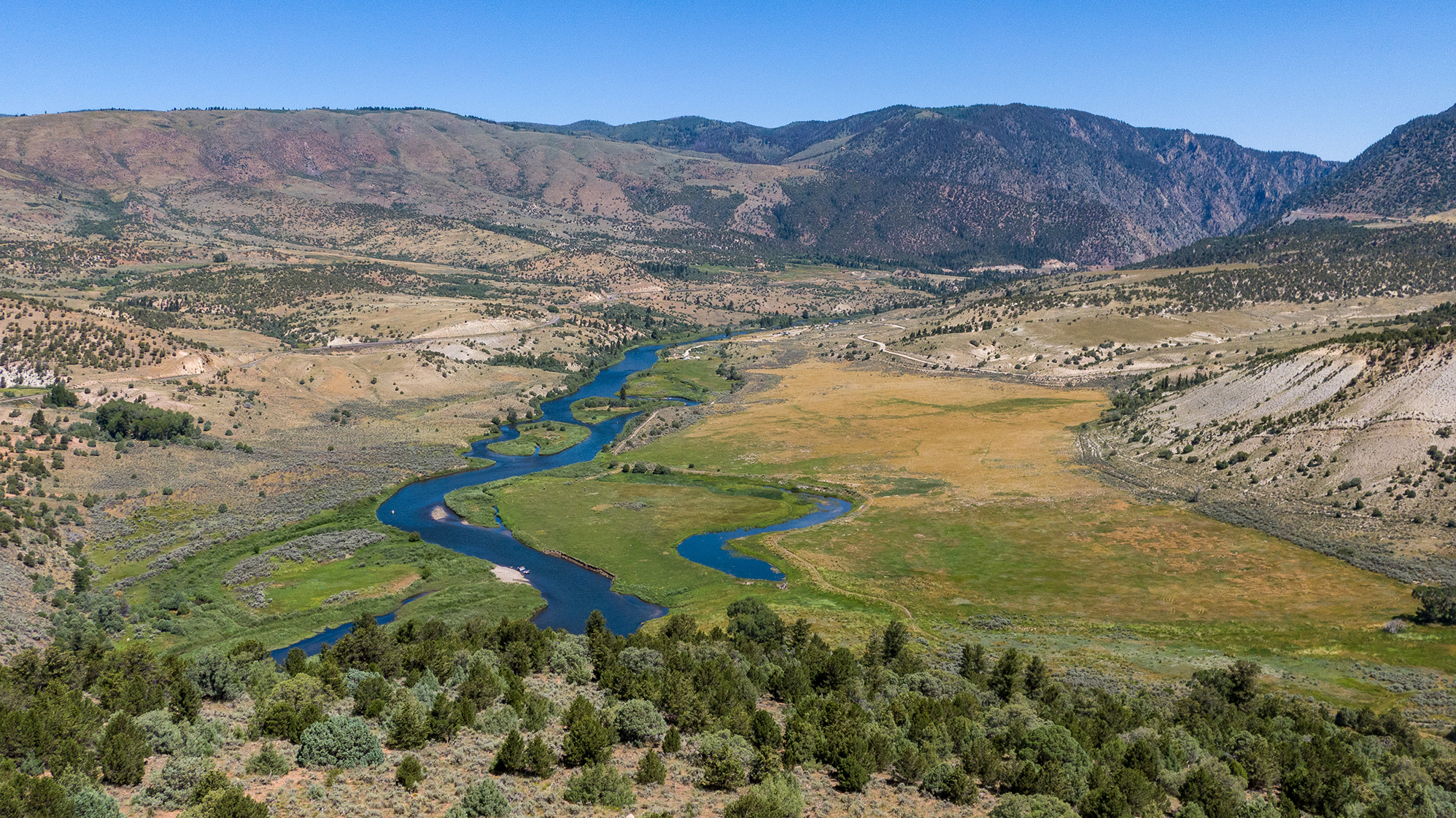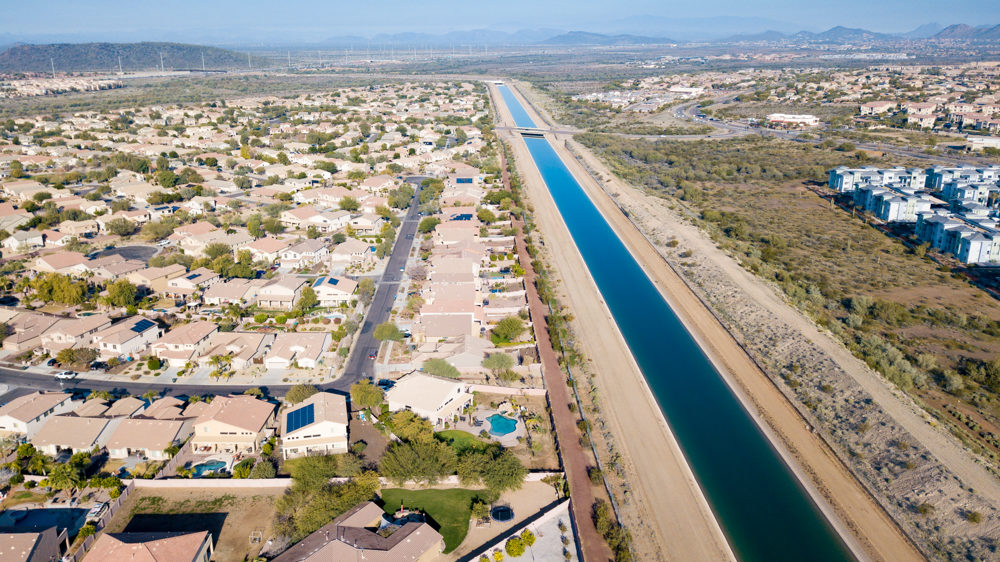Impaired water quality is a commonly overlooked threat to ocean and public health, with roughly 80 percent of the world’s wastewater discharged into lakes, rivers, streams, and ultimately the ocean. In this interview, Our Shared Seas sat down with the Water Foundation team to explore how strategic investments in water infrastructure can lead to better outcomes for the ocean, coasts, and human communities.

Photo: iStock/Sasiistock
Jen Sokolove leads the Water Foundation’s program team, which drives grantmaking strategy to secure safe water for people, restore and sustain freshwater ecosystems, and build climate resilience. In this interview, Jen tells Our Shared Seas how civil society and the Biden administration ushered in a game-changing era of water investments in 2021 and why philanthropy is needed to ensure those funds maximize outcomes for communities, freshwater, and coasts in 2022 and beyond.
Can you tell us more about what the Water Foundation works on, and how it aims to influence federal and regional policy?
The Water Foundation works on all things water, including water quantity and quality. We work on improving freshwater ecosystems and ensuring that drinking water is clean, safe, and affordable. We also work on climate resilience, both urban and rural. With our partners, we advance water policy solutions focused on those issues and support local, state, and federal agencies to ensure that those policies are implemented to maximize their ecological and equity impacts. Just getting the policy passed is really the first step, even though it’s a big step. Ultimately, our work is about ensuring that policies have the desired impact on the ground.

Many municipal infrastructure systems handle waste and stormwater in the same pipes, which can lead to combined sewer overflows, particularly during intense rainfall events. Roughly 80 percent of the world’s wastewater is discharged, untreated or only partially treated, into lakes, rivers, streams, and ultimately, the ocean. Photo: iStock/photovs
What were some of the key water wins in 2021? There were some big changes that came with the new Biden administration.
There were a lot of key water wins in 2021! The biggest win for water quality last year was the Infrastructure Improvement and Jobs Act. Depending on how you calculate it, the bill adds around $85 billion in water investments across all the programs that touch water. That is one of the biggest—maybe the biggest—single tranche of funding ever put aside for water infrastructure in the U.S.
A lot of those resources should directly improve water quality. The legislation will lead to investments in things like drinking water and wastewater infrastructure, ecosystem restoration, stormwater and flood mitigation, and drought resilience.
For the first time in a long while, elected officials are starting to understand that our aging and antiquated water infrastructure is a national responsibility. Over the last couple of decades, we’ve been inching away from that vision and expecting all utilities, whether drinking water, wastewater, or stormwater, to be managed on the backs of their ratepayers rather than treating water as a fundamental, collective benefit. The pandemic really helped us think differently in that way, and that’s something important we can follow up on over time.

The Fontenelle Reservoir stores water from the Green River in southwestern Wyoming, above the Flaming Gorge reservoir. Photo: Ted Wood / The Water Desk
The other big thing that happened is that we started having a conversation about affordability at the national level and started to think about low-income assistance for water. For many years, we’ve provided lifeline rates for access to energy and telephones, but we haven’t done the same for water, even though people cannot live without water. Collectively, we’re starting to understand that water is something that we want everyone to have.
The biggest win for water quality last year was the Infrastructure Improvement and Jobs Act. Depending on how you calculate it, the bill adds around $85 billion in water investments across all the programs that touch water. That is one of the biggest—maybe the biggest—single tranche of funding ever put aside for water infrastructure in the U.S.
How did funders and civil society contribute to these changes?
Water-focused funders and civil society groups put together a solid outreach, education, and advocacy campaign very quickly as the need for access to water was highlighted by the pandemic. In many ways, there was a water-for-all opportunity that started in 2020 and culminated with the bipartisan infrastructure bill in 2021. Advocates who had been active on drinking water in the states went to work at the federal level to stop water shut-offs. Then they started working on emergency water debt relief and water affordability, and then an infrastructure bill became part of the conversation. On a range of issues, they found common cause with the utility sector and environmental organizations. Utilities are obviously very invested in how infrastructure dollars move. For the conservation community, clean water is critical for ecosystem health and biodiversity, and there is interest in investing in green infrastructure and natural solutions. Civil society moved into that vacuum quickly and worked effectively.
What water quality issues has the Biden administration prioritized so far? What other water quality issues can we expect attention on in the next few years?
There has been a strong emphasis so far on lead pipe replacement and per-and polyfluoroalkyl substances (PFAS). PFAS are “forever chemicals” found everywhere, in pretty much every congressional district. So, it’s perhaps not a surprise that an unusually bipartisan group of legislators has been advancing various forms of PFAS legislation for several years now.
Lead is also a widespread issue, particularly in older urban centers. In 2014, the heartbreak of Flint brought national attention to the need for lead pipe and service line replacement, and ever since, advocates have reminded legislators of the damage these contaminants cause to their communities and other communities across the country. Those wins should be understood as the culmination of a longer-term effort. The groundwork those activists had been laying for years served as the basis for water infrastructure legislation when the political window opened.

Looking upstream at the Colorado River, near Radium. Photo: Mitch Tobin / WaterDesk.org
It was a big deal that President Biden talked about clean water in the 2021 State of the Union. Presidents don’t tend to talk about water on that kind of stage. I think that in the coming years, Americans will see more attention on the intersection of climate, water, and equity, especially focused on coastal and urban resilience. I think we’ll also revisit questions around how we build infrastructure so that people can live in the face of climate extremes, and we will have to think more about solving for multiple problems simultaneously. My guess is that those will be increasingly significant pieces of the federal conversation over time. Extreme weather seems likely to help advance that conversation.
I think that in the coming years, Americans will see more attention on the intersection of climate, water, and equity, especially focused on coastal and urban resilience. I think we’ll also revisit questions around how we build infrastructure so that people can live in the face of climate extremes, and we will have to think more about solving for multiple problems simultaneously. My guess is that those will be increasingly significant pieces of the federal conversation over time. Extreme weather seems likely to help advance that conversation.
How will these policy and funding opportunities affect the ocean and coastal water quality?
For ocean and coastal water quality, State Revolving Funds—which provide low-cost financing to communities for drinking water and clean infrastructure projects—have a lot of implications for what flows into our rivers and ocean. This is a chance to really be thinking about how to maximize the positive impacts of this funding on nature and on our communities.
There is also an important aspect of this conversation focused on coastal planning of infrastructure and toxics. There are a surprising number of toxic sites that are in deep flooding zones, particularly in coastal regions. We saw this when hurricanes hit North Carolina and Houston. We are way behind the curve in thinking about how siting industrial infrastructure affects both our freshwater and our coastal waters.
What are the Water Foundation’s priorities around these issues in the next year?
At the highest level, our priorities are to make sure that the new public resources for water infrastructure move to the greenest solutions in the places that need them most, particularly the places that have mostly been ignored when public dollars were allocated or were never included in public water infrastructure funding in the first place.

The CAP canal, brings CO River water to North Phoenix. This area of Phoenix is served entirely by CAP. Photo: Ted Wood / The Water Desk
What can marine conservation funders and organizations do to leverage this moment for coastal water quality in 2022?
That’s a great question. I’d say, first, work on wastewater and stormwater all the way up and down the system. Second, public funding is good at supporting projects. It is generally not great for supporting the relationship, organizing, planning, and advocacy work that begets good projects and moves them all the way through the pipeline from vision to completion. It is often, frankly, harder to do creative, community-based projects than it is to build the same infrastructure we’ve always built with the same partners who have built it before. Philanthropy has a chance to help change that game by investing in what works: people power.
Funders can directly support communities to design, plan, and develop projects, and to build relationships with the utilities and funding agencies that can help make those projects a reality. They can help push forward projects that maximize both natural infrastructure and technical innovation.
Funders can directly support communities to design, plan, and develop projects, and to build relationships with the utilities and funding agencies that can help make those projects a reality. They can help push forward projects that maximize both natural infrastructure and technical innovation. Green infrastructure projects, for example, don’t have to be fancy, but they can make a big difference all the way from rain gardens and swales in neighborhood streets to headwaters forests that provide source water for entire urban areas. These projects have multiple win-wins. They improve water quality, enhance nature, and provide a chance to prioritize the places that have been underinvested in—with real race and class implications. There’s enough money out there right now to make those projects happen. In 2022, philanthropy has a timely opportunity to help advance projects beyond the status quo by supporting the work it takes to achieve creative and innovative solutions that benefit the environment and people.

Sedona, Arizona. Photo: iStock / vadimgouida
In 2022, philanthropy has a timely opportunity to help advance projects beyond the status quo by supporting the work it takes to achieve creative and innovative solutions that benefit the environment and people.
Jen Sokolove leads the Water Foundation’s programs team, which drives grantmaking strategy to secure safe water for people, restore and sustain freshwater ecosystems, and build climate resilience.
